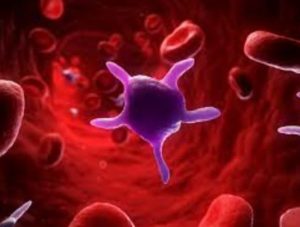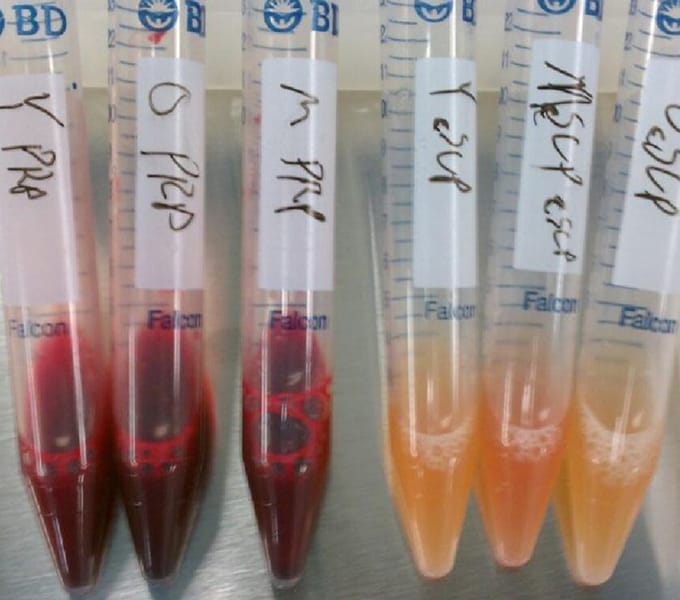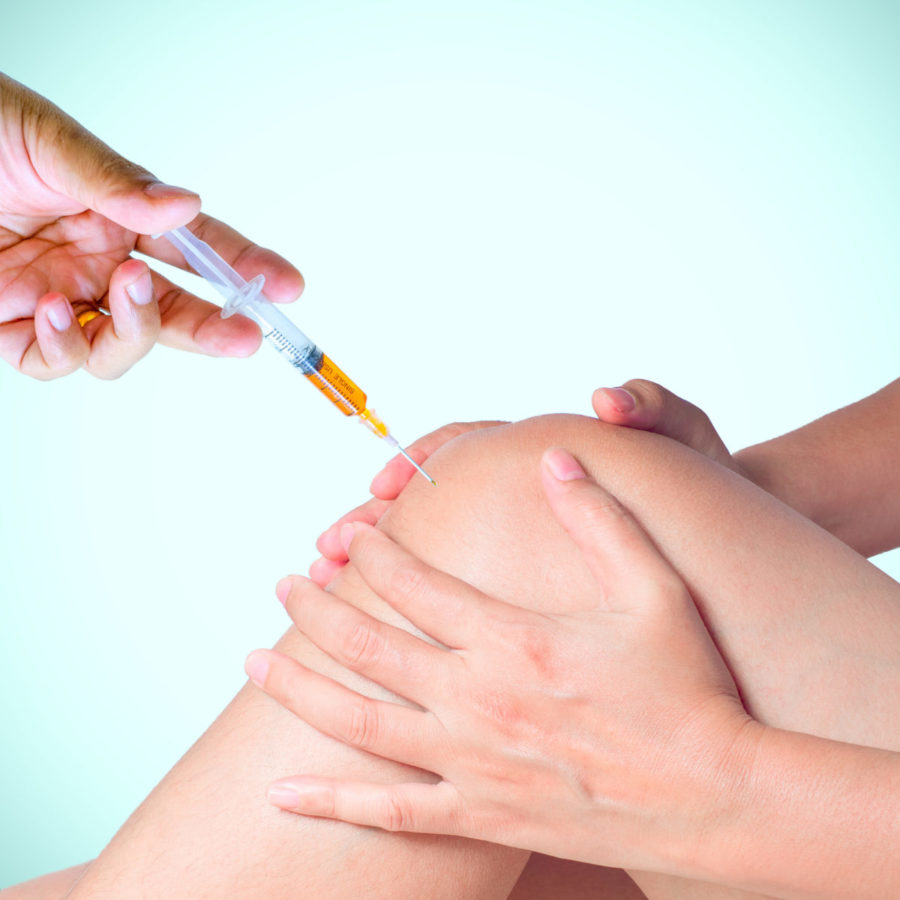Your pain has been debilitating and has not responded to conservative care. Professional athletes and others have boasted about their results from PRP. What is PRP? Are there different types of PRP? What is the PRP injection process? What are the Indications for PRP? What is the PRP Injection Recovery Time? Let’s dig in.
What is PRP?

PRP stands for Platelet-Rich Plasma. Platelets are blood cells that prevent bleeding. They contain important growth factors that aid in healing. Plasma is the light yellow liquid portion of our blood. So PRP is simply a concentration of a patient’s own platelets that are suspended in plasma and are used to accelerate healing. PRP is NOT stem cell therapy. Regrettably, blood contains few circulating stem cells. Rich sources of stem cells are bone marrow and fat.
Are There Different Types of PRP?
There are two main types of PRP that are commonly used for injection (1). The types are based upon the presence or absence of red and white blood cells. Both types have high concentrations of platelets.
- Red PRP is rich in white and red cells. It is referred to as leukocyte rich (LR-PRP)
- Amber PRP has very low quantities of red and white cells. It is referred to as leukocyte poor ( LP-PRP)

PRP Injection Process
A PRP injection process involves several steps which are summarized below.
- Under sterile conditions, your blood is drawn typically from the arm or hand. Volumes drawn vary depending upon the number of areas injected and the concentration requested.
- At most clinics, the blood is placed into a centrifuge. This is a machine that spins the blood causing it to separate. Unfortunately, the centrifuge is limited in its ability to customize the PRP. The result is a process where one size fits all. At the Centeno-Schultz Clinic, we utilize a state of the art laboratory with cell biologists on staff that can customize the volume and concentration of the PRP. In this way, you get a very specific and personalized PRP intended for your personal needs. PRP concentration matters. We have published our own research demonstrating that higher concentrations of PRP were more effective in tendon healing in older patients (2).
- The PRP is injected into a targeted area utilizing ultrasound, or x-ray, or both. Image guidance is essential to deliver the PRP into the targeted structure and to obtain the best clinical results.
- PRP Injection Recovery Time is covered below.
To learn more about the different types of PRP please watch the video below.
Indications for PRP
PRP can facilitate healing, reduce pain, and increase function in many different conditions. The most common conditions include.
- Sciatica: PRP has been demonstrated to be more effective than steroids in the treatment of sciatica (3)
- Knee arthritis: In a recent large review of many different high-level studies, PRP was shown to be effective in treating knee arthritis (4)
- Tennis Elbow: PRP injection has also been shown to be more effective than steroid shots in the treatment of tennis elbow (5)
- Achilles Tendinopathy: An effective, non-surgical option for the treatment of Achilles tendon injuries (6)
- Low Back Pain: PRP has been demonstrated to be more effective than steroids in the treatment of low back pain (7)
- Sacroiliac Joint Pain and Dysfunction: PRP is superior to steroid injections without the side effects (8)
- Rotator Cuff Injuries: PRP can increase blood flow thereby accelerating the healing of rotator cuff tendon injuries.
- Inflammed or Injured Nerves. Please see my blog on treatment options for carpal tunnel syndrome
PRP Injection Recovery Time
The PRP injection recovery time varies depending on the area of your body that’s been treated as well as the severity of your condition or injury. For example, joint injections are typically less painful and respond quicker than injections into the tendons, ligament, and muscle injuries. Because PRP injections are intended to promote healing or growth, you may not notice an immediate difference after receiving the injections. The PRP injection recovery time can be affected by the following factors:
The Site of Injection
PRP recovery time of injections into the joint (intra-articular) are fairly quick with only 3-5 days of soreness and possible swelling. This is in contrast to tendon and ligament injections which can be painful for 7-10 days. Thereafter the improvement is gradual and can take up to 3-4 months.
The Severity of Injury
The more severe the joint, tendon, or ligament injury or underlying condition the, longer the potential PRP injection recovery time.
Number of Sites Injected
If multiple tendons, ligaments, muscle, and joints are injected this can potentially prolong the PRP injection recovery time. How? It can potentially limit one’s activity and ability or willingness to engage in PT in the short term.
Tendon and ligament healing occurs in three phases. Inflammation is the first phase and typically lasts 1-2 weeks. New, disorganized tissue is laid down during the second phase which lasts 2-6 weeks. The new tissue is reorganized and made stronger during the third phase which occurs from 6 weeks to 6 months.
To learn more about ligament and tendon healing after PRP please watch the video below.
In Conclusion
PRP stands for Platelet-Rich Plasma. It uses a patient’s own concentrated platelets to accelerate healing. There are two common types of PRP injections: leukocyte rich and leukocyte poor. The PRP process involves the collection of a patient’s own blood which is then processed in a lab or centrifuge where is it is separated and concentrated. The concentrated platelets are then re-injected into the area of injury under ultrasound or x-ray guidance. Indications for PRP injections include sciatica, knee arthritis, tennis elbow, Achilles tendinopathy, low back pain, sacroiliac joint dysfunction, and rotator cuff injuries. PRP injection recovery time varies depending upon the area of the body treated and the severity of the underlying condition. Injections into the joint are fairly quick with only 3-5 days of soreness and swelling. Tendon and ligament injections can be painful for 7-10 days with gradual improvement over 3-4 months. Tendon and ligament healing occurs in three distinct phrases. PRP is an effective, non-surgical treatment option for a growing number of common orthopedic conditions allowing patients to avoid the risks, complications, and extensive downtime associated with surgery.
If your surgery was canceled or postponed now is a great time to better understand your Regenerative treatment options. Schedule a Telemedicine consultation with a board-certified, fellowship-trained physician to learn whether PRP can get you back into the game.
1. Mautner K, Malanga GA, Smith J, Shiple B, Ibrahim V, Sampson S, Bowen JE. A call for a standard classification system for future biologic research: the rationale for new PRP nomenclature. PM R. 2015 Apr;7(4 Suppl):S53-S59. doi: 10.1016/j.pmrj.2015.02.005.
2.Berger DR, Centeno CJ, Steinmetz NJ. Platelet lysates from aged donors promote human tenocyte proliferation and migration in a concentration-dependent manner. Bone Joint Res. 2019;8(1):32–40. Published 2019 Feb 2. doi: 10.1302/2046-3758.81.BJR-2018-0164.R1
3.Centeno C, Markle J, Dodson E, et al. The use of lumbar epidural injection of platelet lysate for treatment of radicular pain. J Exp Orthop. 2017;4(1):38.
4.Xing D, Wang B, Zhang W, Yang Z, Hou Y1,2, Chen Y, Lin J. Intra-articular platelet-rich plasma injections for knee osteoarthritis: An overview of systematic reviews and risk of bias considerations. Int J Rheum Dis. 2017 Nov;20(11):1612-1630. doi: 10.1111/1756-185X.13233.
5. Xu Q, Chen J, Cheng L. Comparison of platelet-rich plasma and corticosteroids in the management of lateral epicondylitis: A meta-analysis of randomized controlled trials. Int J Surg. 2019 Jul;67:37-46. doi: 10.1016/j.ijsu.2019.05.003
6.Wang Y, Han C, Hao J, Ren Y, Wang J. Efficacy of platelet-rich plasma injections for treating Achilles tendonitis : Systematic review of high-quality randomized controlled trials. Orthopade. 2019 Sep;48(9):784-791. doi: 10.1007/s00132-019-03711-y.
7.Monfett M, Harrison J, Boachie-Adjei K, Lutz G. Intradiscal platelet-rich plasma (PRP) injections for discogenic low back pain: an update. Int Orthop. 2016 Jun;40(6):1321-8. doi: 10.1007/s00264-016-3178-3.
8.Singla V, Batra YK, Bharti N, Goni VG, Marwaha N. Steroid vs. Platelet-Rich Plasma in Ultrasound-Guided Sacroiliac Joint Injection for Chronic Low Back Pain. Pain Pract. 2017 Jul;17(6):782-791. doi: 10.1111/papr.12526.
